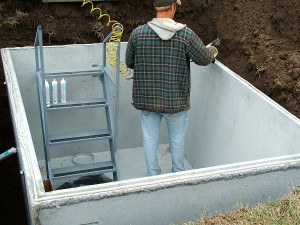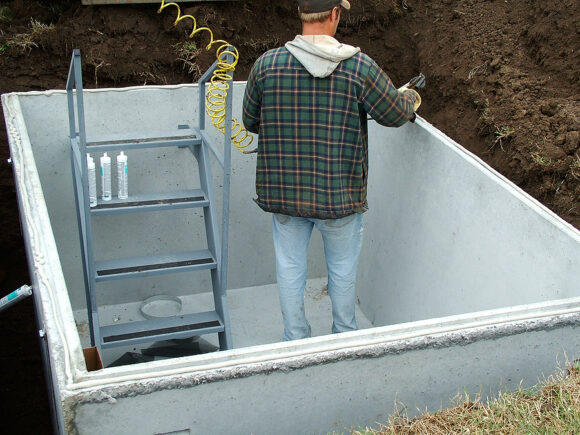Before April 28, two suppliers of storm shelters reported an average of four to 10 orders a month in 2014.
Each says since then, they’ve sold more than 100 and that it could be several months before they catch up with installing them.
It was on that day 23 tornadoes struck Mississippi, killing 14 people. Six of those deaths were in Louisville, where an EF-4 tornado touched down. One death was reported in Tupelo, which also sustained major damage from an EF-2 tornado.
A concrete storm shelter made by Macon Septic Systems survived the Louisville tornado. Galen Schrock, owner of that company, said he’s received so many orders for the shelters from Louisville and Golden Triangle area residents that he’s struggling to keep up with the demand.
Manager Chris Koehn of Lee’s Precast, another manufacturer in Aberdeen, said he’s experiencing the same situation.
“I don’t know what to do,” Schrock said. “We were piddling along at maybe three or four a month and all at once we got over 100. I call it a blessing, I guess, in the midst of tragedy. I hate it happened, but people are coming back that have looked at our shelters several times, and this time they’ve decided they’re going to do something.”
Schrock’s company makes above-ground and underground shelters – usually two a day, he said. His highest-selling item is an 8-by-8 above-ground box structure, but his company also produces 8-by-10 and underground 5-by-8 shelters. They typically range from $2,850 to $3,750, he said.
Lee’s Precast averaged five to 10 sales of shelters each month the first three months of 2014, Koehn said. In April, he sold 20. In May, there were 60 orders, and he projects about the same amount to be sold in June.
The two most popular models are 5-by-8 and 6-by-12 above ground shelters, he said, but there are two garage models that have been introduced to the market that are growing in popularity, he said, that can be taken underneath a garage door and set in place.
“We like to have 20 to 30 shelters of each size in stock so when a storm hits, we have a large inventory to start pulling out of,” Koehn said. “We start taking orders and give them dates when they can expect to get it. We start manufacturing more storm shelters per day depending on the demand as to how many shelters we produce a day. Right now we’re turning forms twice a day, but we can do three if we need to.”
Koehn said workers will continue to make shelters at that clip for at least another six weeks before they’re caught up with all the orders, but that projection changes daily because he’s continuously taking more orders. Schrock said it could be “a couple of months” before he fills all his orders.
Koehn and Schrock said as would be expected, sales spike every time a severe weather event takes place.
New Hope resident Juanice Hayes had that experience last month. She has an underground storm shelter she says she’s used about 10 times in the past 15 years, but she didn’t retreat to it when tornadoes reached Lowndes County last month because she concluded that none of them were on track to hit her neighborhood. She found out otherwise just in time to get in her closet. The storm uprooted several trees on her property, none of which fell on her home.
“If a tree had come crashing on my house, that probably would have been the end of me,” Hayes said. “I grew up with storm shelters underground. Nobody was ever killed in our area because everybody went to the storm cellars. They save lives. If I had it to do over, I would have a standing one so I could just walk in.”
Schrock said he’s had to reassure some of those who bought shelters from him and expected to have them installed within days.
“We tell people to just have patience with us,” Schrock said. “That’s all I can tell them right now.”
Was this article valuable?
Here are more articles you may enjoy.


 First Brands Judge Approves Examiner to Probe Fraud Allegations
First Brands Judge Approves Examiner to Probe Fraud Allegations  What The Return of California’s ‘Death Discount’ Means for Litigation
What The Return of California’s ‘Death Discount’ Means for Litigation  Musk’s X Probed by UK Over Grok’s Thousands of Sexualized Images
Musk’s X Probed by UK Over Grok’s Thousands of Sexualized Images  Musk’s xAI Faces California AG Probe Over Grok Sexual Images
Musk’s xAI Faces California AG Probe Over Grok Sexual Images 